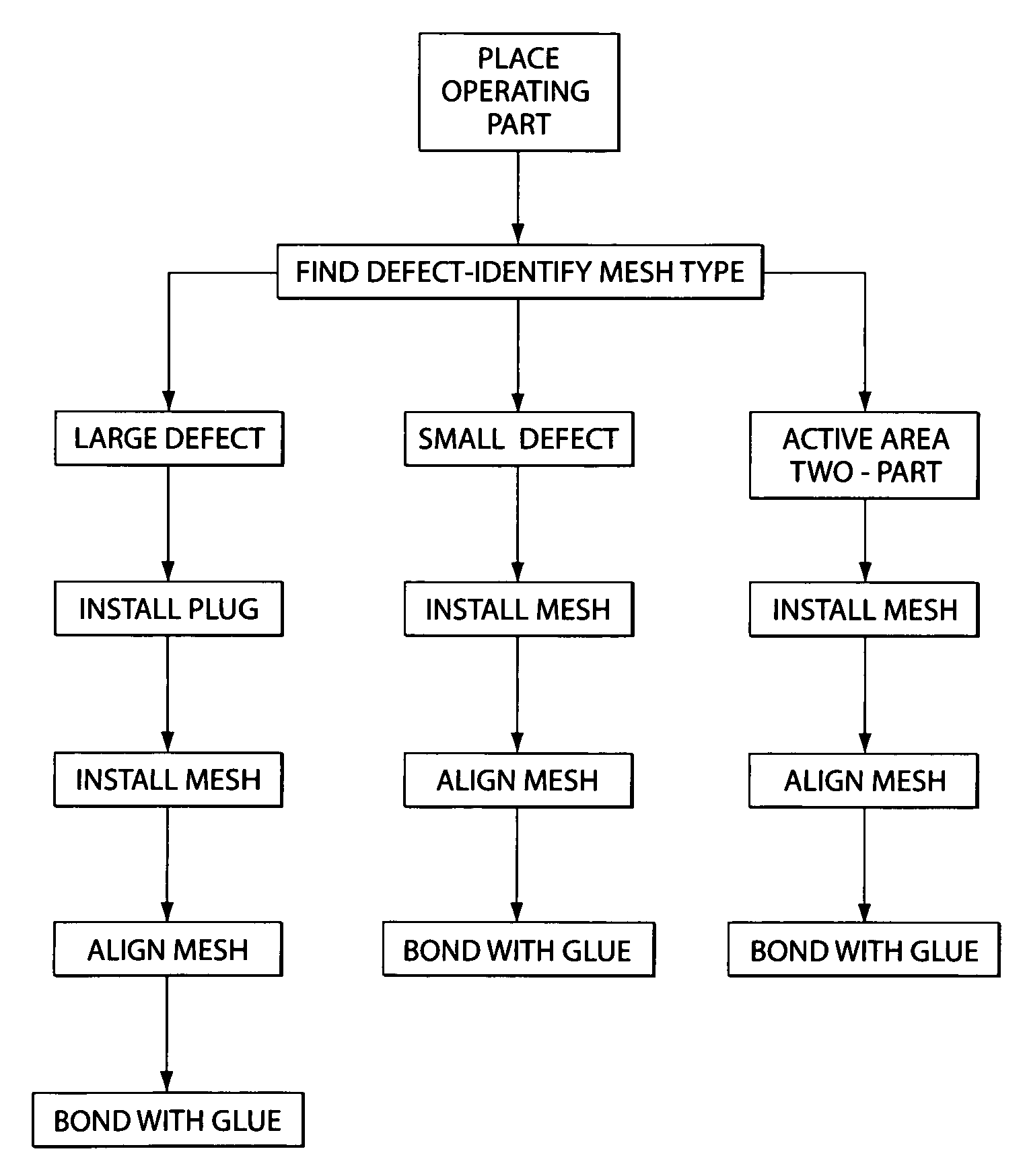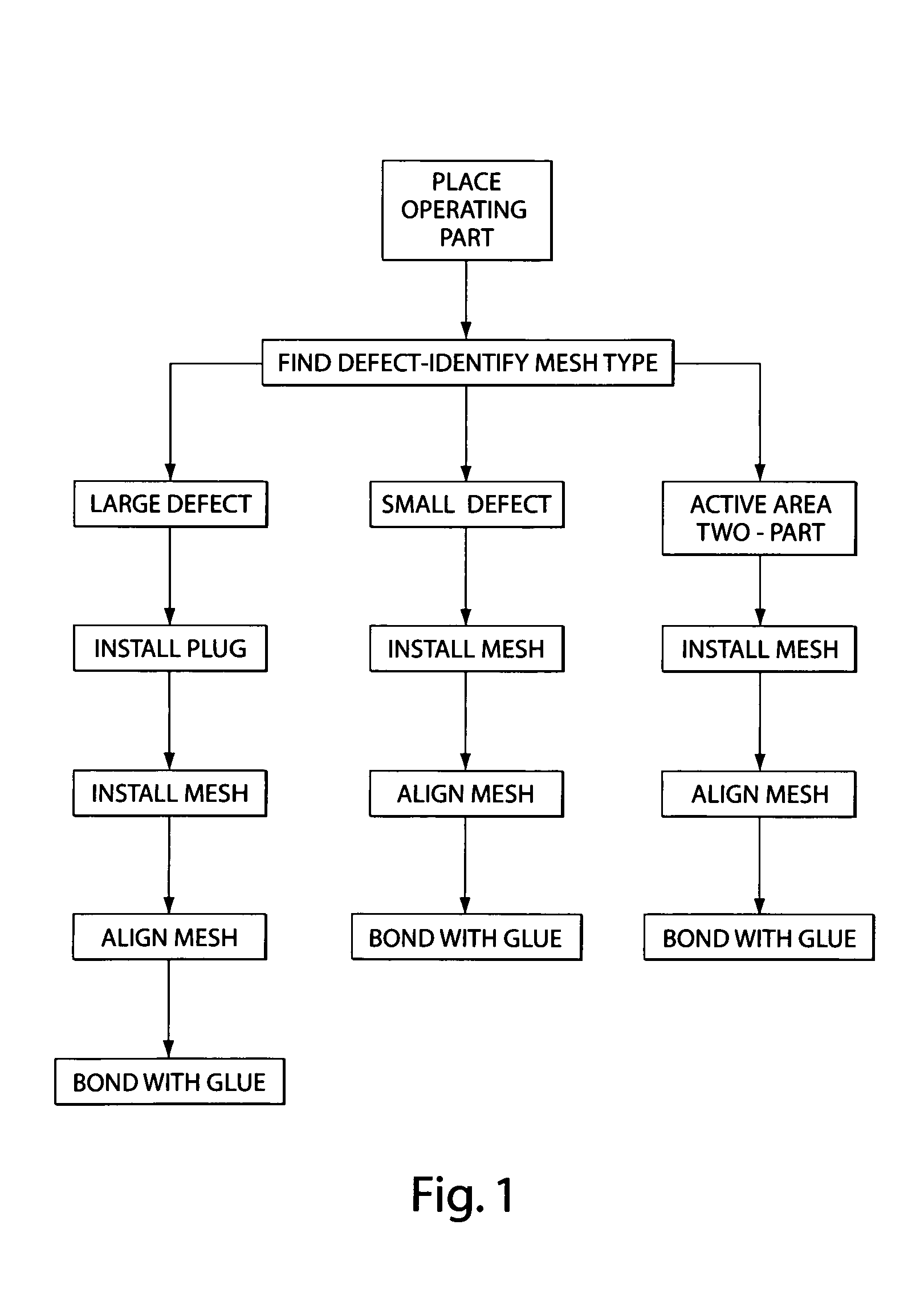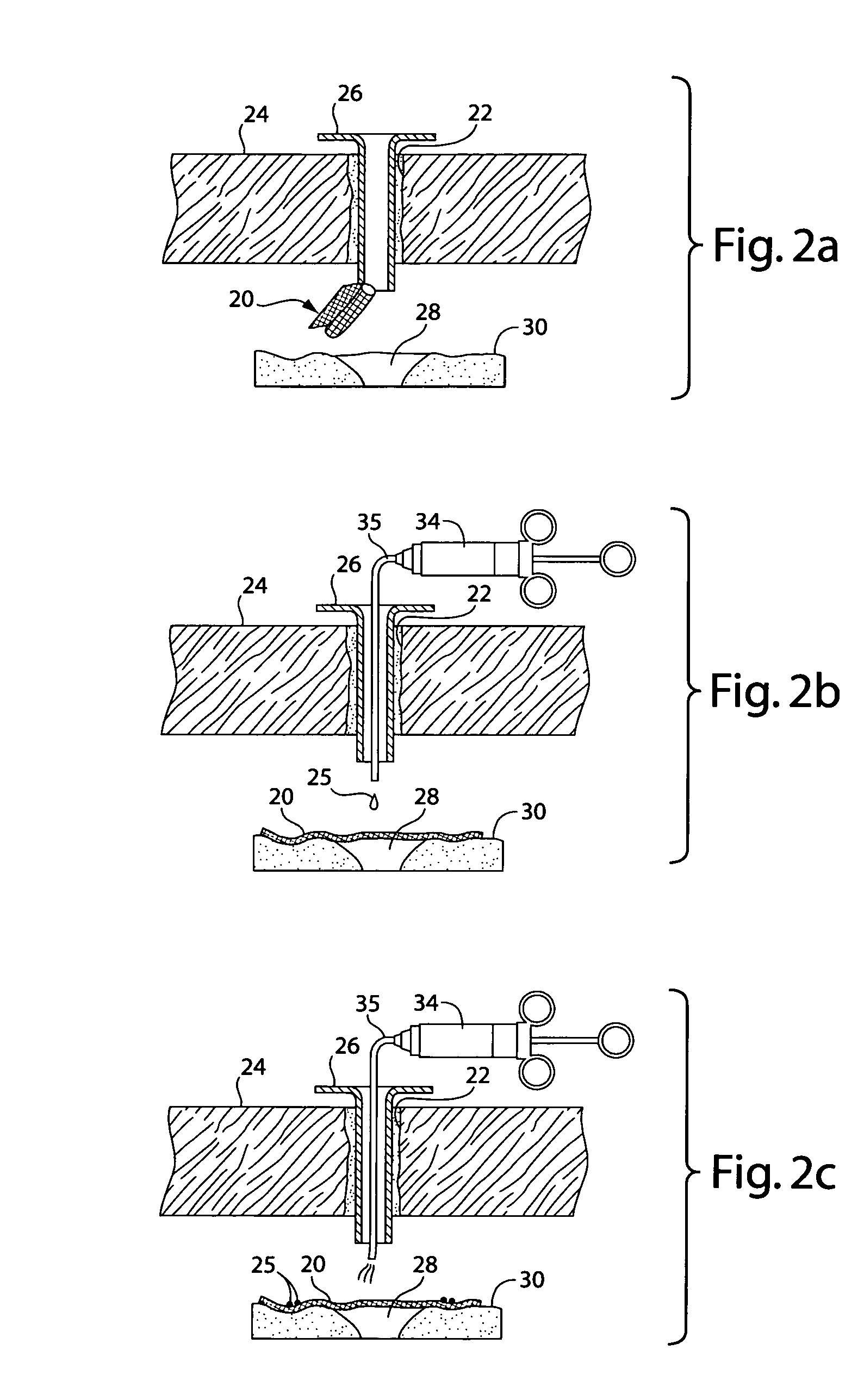Surgical repair of tissue defects
a tissue defect and surgical technology, applied in the field of surgical devices and procedures, can solve the problems of increasing the duration of surgery, affecting the quality of surgical work, so as to reduce the viscosity or viscosity, and minimize the shifting of the prosthesis
- Summary
- Abstract
- Description
- Claims
- Application Information
AI Technical Summary
Benefits of technology
Problems solved by technology
Method used
Image
Examples
Embodiment Construction
[0061]Referring now to the drawings in detail, and particularly to FIG. 1, there is shown in a block diagram format, the process of the present invention, and in FIGS. 2a, 2b and 2c, as schematic representations of the surgical repair apparatus and its associated procedure for treating tissue defects.
[0062]The invention thus comprises a mesh 20 intended to be implanted laparoscopically, as may be envisioned in FIGS. 2a–2c, and constructed so as to allow for it to be delivered through a small hole or access port 22 in the skin 24. Meshes 20 delivered in this way are preferably rolled into a cylinder, as shown in FIG. 2a, passed through a trocar 26 in the access port and unfurled over the tissue defect 28. Additional instrumentation may be introduced in the access port 22 for the purpose of suturing or stapling the mesh 20 to the tissue 30. One of the complications of introducing an adhesive coated mesh in this way is the likelihood that it will adhere to itself or to surrounding tiss...
PUM
| Property | Measurement | Unit |
|---|---|---|
| Solubility (mass) | aaaaa | aaaaa |
| Water solubility | aaaaa | aaaaa |
| Sensitivity | aaaaa | aaaaa |
Abstract
Description
Claims
Application Information
 Login to View More
Login to View More - R&D
- Intellectual Property
- Life Sciences
- Materials
- Tech Scout
- Unparalleled Data Quality
- Higher Quality Content
- 60% Fewer Hallucinations
Browse by: Latest US Patents, China's latest patents, Technical Efficacy Thesaurus, Application Domain, Technology Topic, Popular Technical Reports.
© 2025 PatSnap. All rights reserved.Legal|Privacy policy|Modern Slavery Act Transparency Statement|Sitemap|About US| Contact US: help@patsnap.com



